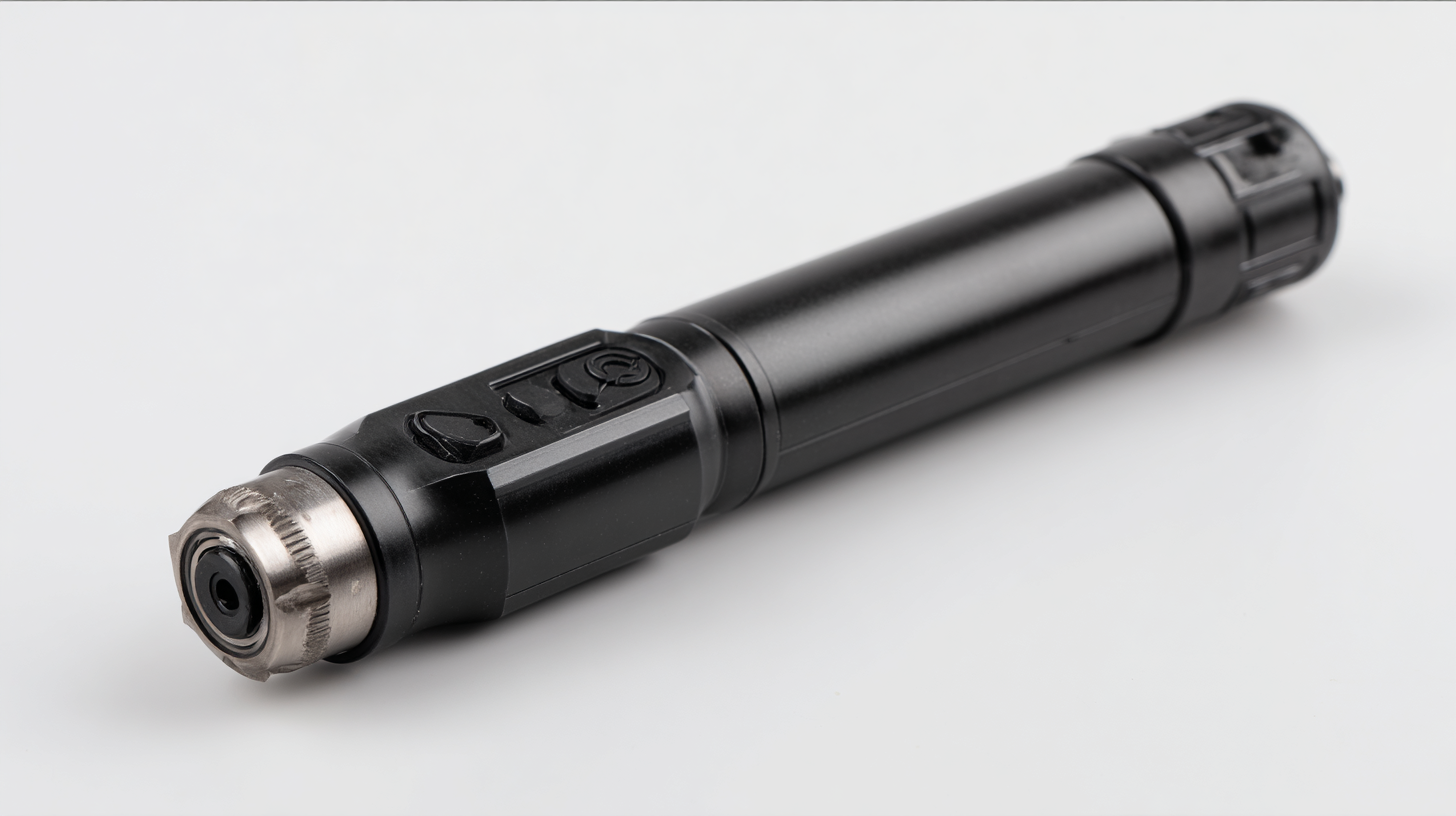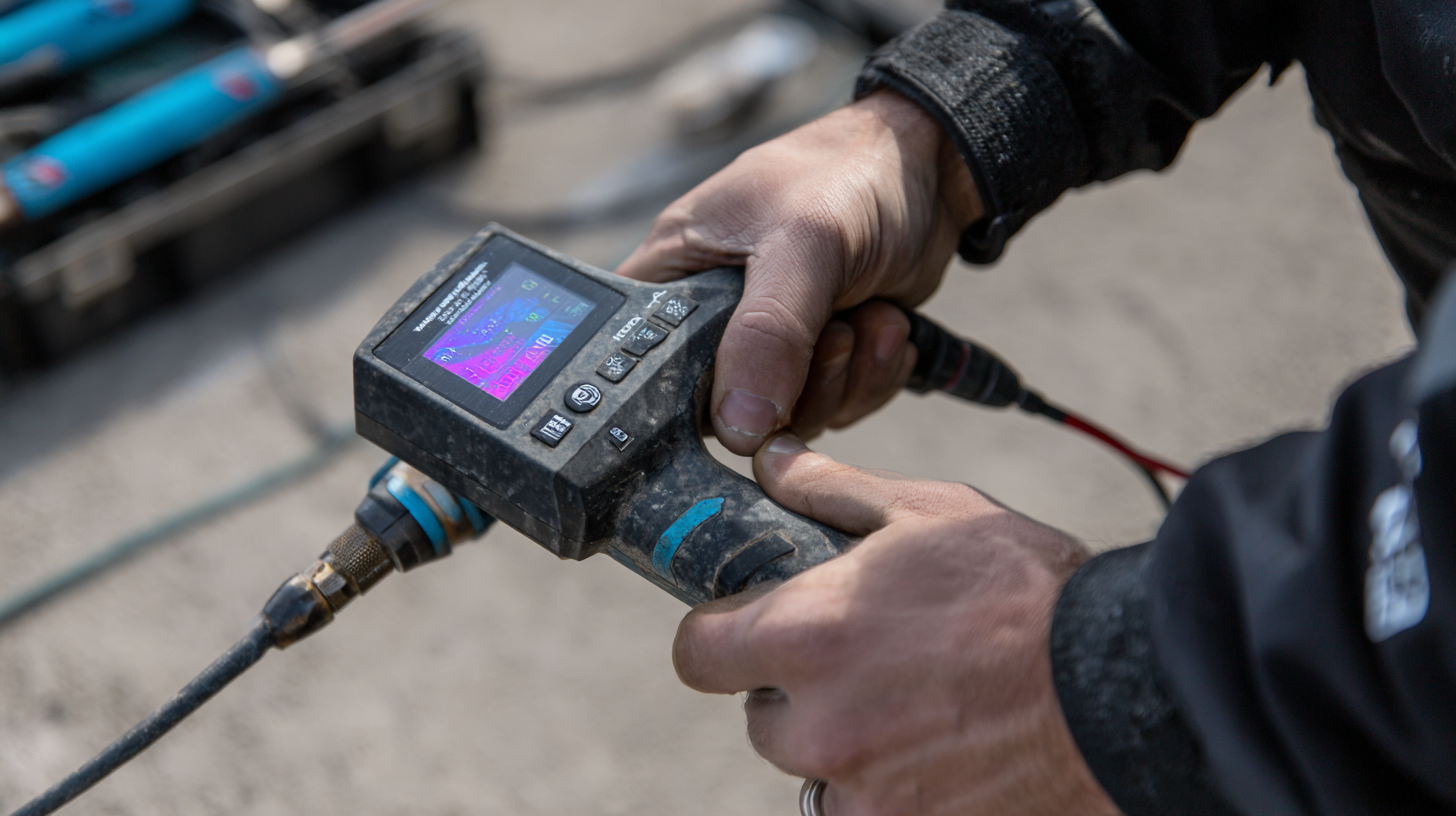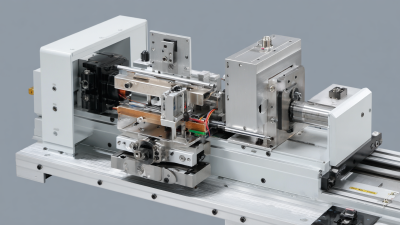Leave Your Message
In the ever-evolving manufacturing and assembly industries, optimizing efficiency is paramount, particularly when it comes to joining processes.
 The Ultrasonic Welder Handheld has emerged as a game-changing tool, revolutionizing how professionals approach seamless project execution. According to a report from MarketsandMarkets,
the ultrasonic welding market is projected to reach USD 2.14 billion by 2025, highlighting the growing demand for advanced joining technologies.
The Ultrasonic Welder Handheld not only improves processing speed but also enhances the quality of welds, reducing defects and material waste.
By leveraging this innovative tool, businesses can streamline operations, increase productivity, and achieve consistent results across various applications,
from automotive components to medical devices. This guide will elucidate how to maximize the potential of the Ultrasonic Welder Handheld,
ensuring you stay ahead in a competitive landscape.
The Ultrasonic Welder Handheld has emerged as a game-changing tool, revolutionizing how professionals approach seamless project execution. According to a report from MarketsandMarkets,
the ultrasonic welding market is projected to reach USD 2.14 billion by 2025, highlighting the growing demand for advanced joining technologies.
The Ultrasonic Welder Handheld not only improves processing speed but also enhances the quality of welds, reducing defects and material waste.
By leveraging this innovative tool, businesses can streamline operations, increase productivity, and achieve consistent results across various applications,
from automotive components to medical devices. This guide will elucidate how to maximize the potential of the Ultrasonic Welder Handheld,
ensuring you stay ahead in a competitive landscape.
Handheld ultrasonic welders have become essential tools for DIY enthusiasts, offering a unique combination of efficiency and precision in various projects. According to a report from the Ultrasonic Welding Association, the global market for ultrasonic welding technology is projected to reach $2 billion by 2025, indicating the growing popularity and demand for these tools. Their ability to create strong, durable joints without the need for additional materials such as adhesives or fasteners makes them ideal for a wide range of applications, from automotive repairs to crafting intricate models.
One of the main advantages of using handheld ultrasonic welders is their portability. This feature empowers DIY enthusiasts to execute seamless projects directly at their workstations or even on-site, without losing the quality of the weld. Furthermore, ultrasonic welders operate at high frequencies which minimizes heat generation, ensuring that sensitive materials are not damaged during the welding process. This capability not only enhances the quality of the output but also allows users to explore new creative possibilities safely, making handheld ultrasonic welders a worthwhile investment for both hobbyists and professional craftsmen alike.

Ultrasonic welding is an innovative process that utilizes high-frequency sound waves to create a solid-state bond between materials, typically thermoplastics and metals. At its core, the technique works by converting electrical energy into mechanical vibrations, which generate heat through friction at the joint interface of the materials being welded. This precise control of energy allows for minimal thermal impact on surrounding areas, ensuring that the integrity of the materials is preserved. The process is quick, often requiring just a few seconds to achieve a strong bond without the need for additional adhesives or fillers.
The benefits of ultrasonic welding are significant, particularly in industries where efficiency and quality are paramount. Since the process is fast and does not require consumables, it reduces production times and costs. Additionally, the strong bonds formed through ultrasonic welding enhance the durability of the final products. This method also promotes environmentally friendly practices, as it produces less waste and avoids the use of harmful chemicals. The versatility of ultrasonic welders, especially handheld models, allows for seamless operation across various applications, from automotive components to medical devices, making it an essential tool for modern manufacturing processes.
When searching for the ultimate handheld ultrasonic welder, there are several top features to prioritize that can significantly enhance your project efficiency. Firstly, look for power output versatility. Units that allow you to adjust the power levels according to material thickness can provide better control and complete the job seamlessly across various applications.
Another important feature is the ergonomic design of the welder. A lightweight, well-balanced device can reduce user fatigue, making it easier to handle over long periods. Comfort grips and intuitive controls enhance usability, allowing for intricate work without straining the user’s hands.
**Tips**: Always check the warranty and customer support options before making a purchase. A reliable service can ensure that any technical issues are promptly addressed. Additionally, consider models equipped with safety features like automatic shut-off and overheating protection to enhance both efficiency and safety during operation.
Handheld ultrasonic welders have gained significant traction over traditional welding methods, primarily due to their efficiency and versatility in various applications. According to a report by MarketsandMarkets, the ultrasonic welding market is expected to reach $4.4 billion by 2025, growing at a CAGR of 8.6%. This growth is fueled by the demand for lightweight and high-strength materials in industries like automotive and electronics, where handheld ultrasonic welders excel due to their precision and speed.
In comparative studies, handheld welding methods have demonstrated considerable advantages over traditional techniques, particularly in small-scale and intricate projects. For instance, a survey conducted by the International Ultrasonic Welding Association highlighted that 75% of users found ultrasonic welding significantly reduced cycle times compared to arc welding. Additionally, with the capability to join materials such as plastics and dissimilar metals seamlessly, handheld ultrasonic welders minimize the need for additional fixtures and setup, streamlining the workflow and reducing labor costs. This shift towards handheld solutions not only enhances productivity but also contributes to a more sustainable manufacturing process.

Handheld ultrasonic welders have emerged as pivotal tools across various industries, streamlining processes and enhancing productivity. From automotive to electronics, these versatile devices offer precise and dependable bonding for a range of materials, such as plastics, metals, and textiles. In the medical field, for instance, ultrasonic welding ensures sterile and strong seals for devices and packaging, while in the apparel sector, it enhances production efficiency without compromising on quality.
**Tips**: When using handheld ultrasonic welders, it's essential to familiarize yourself with the settings to achieve optimal results. Always ensure that the surfaces being joined are clean and free of contaminants to avoid defects. Additionally, practice on scrap materials before starting a project to fine-tune your technique.
In the packaging industry, ultrasonic welding facilitates quick and efficient assembly, ensuring reliable seals that maintain product integrity. This method also proves beneficial in the manufacturing of consumer goods, where speed and consistency are critical. Adopting ultrasound technology not only improves product quality but also significantly reduces energy consumption compared to traditional welding methods.
| Industry | Common Applications | Benefits of Handheld Ultrasonic Welders | Efficiency Improvement (%) |
|---|---|---|---|
| Automotive | Joining plastic components, Bonding textiles | Quick setup, Minimal thermal damage | 30% |
| Medical Devices | Sealing pouches, Joining tubing | Clean seals, Reduces contamination risks | 25% |
| Textiles | Seaming non-woven fabrics, Welding patches | Durable seams, High speed | 40% |
| Packaging | Heat sealing bags, Bonding labels | Energy-efficient, Fast processing | 35% |
| Electronics | Joining components, Wire bonding | Precision, Minimal setup time | 20% |






